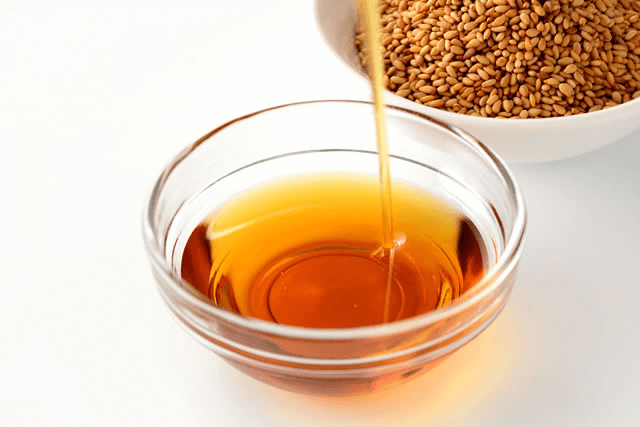
Since sesame oil is used less frequently than salad oil, have you ever accidentally run out of sesame oil?
This article will introduce the characteristics of sesame oil, the nutrition and benefits of sesame oil, five ways to substitute sesame oil when you run out, and dishes that can be made with sesame oil substitutes.
Is there anything I can substitute for sesame oil?
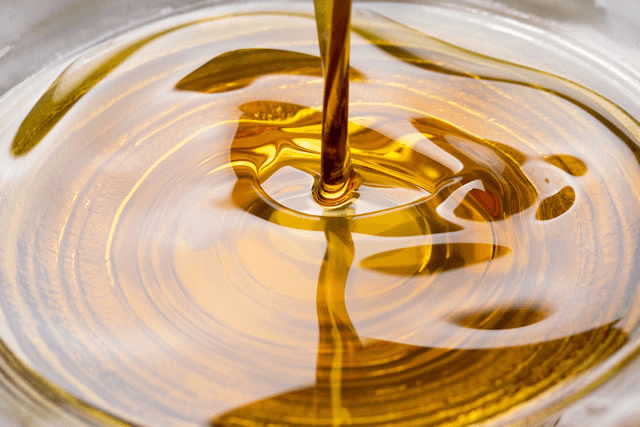
Have you ever run out of sesame oil when you are cooking? Is there anything that can be substituted for sesame oil?
Here, I will introduce you to the substitutes for sesame oil.
It is difficult to substitute sesame oil by itself.
Because sesame oil has a unique sesame flavor, it is difficult to substitute it with any single product.
Substitutions can be made by combining oil with other ingredients.
Sesame oil is difficult to substitute by itself, but it can be substituted by combining it with other ingredients. For a simple combination, mix sesame seeds with salad oil to make an oil with a sesame flavor.
5 ways to substitute sesame oil![]()
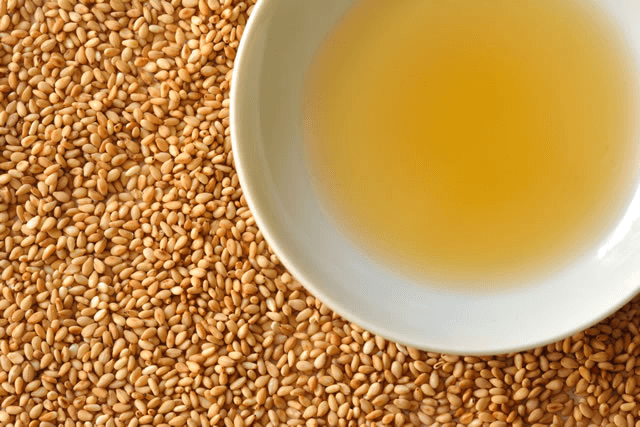
Next, I will introduce five ways to substitute sesame oil: salad oil, chili oil, roasted sesame oil, ground sesame oil, peanut butter oil, and kneaded sesame oil.
Let’s find the best substitute for sesame oil for you.
Adding chili oil to Salad Oil
The first way to substitute sesame oil is to add chili oil to salad oil.
The first way to substitute sesame oil is to add chili oil to salad oil. Chili oil is a vegetable oil made by boiling spices such as chili peppers, sansho, and green onions to give it a spicy flavor. In fact, many chili oils are based on sesame seeds. It is no exaggeration to say that chili oil is sesame oil with a spicy flavor.
However, most chili oil has no taste or aroma and the spiciness comes first, so it is probably perceived more as a “spicy oil. As a substitute for sesame oil, chili oil alone is too spicy, so why not try adding chili oil to salad oil?
What to do when adding chili oil to salad oil?
The key to substituting sesame oil for salad oil is that chili oil is an extract of chili peppers, so it is intensely spicy.
If you use a lot of it as if it were sesame oil, it can become ridiculously spicy. If you want to reduce the excessively spicy part compared to sesame oil, you can use more salad oil.
For western style cooking, mixing with olive oil is also recommended.
Add roasted sesame seeds to the oil
The second way to substitute sesame oil is to add roasted sesame seeds to the oil.
Fry about a tablespoon of white sesame seeds in a frying pan until they are almost cooked, then add salad oil little by little, mix them together, and turn off the heat and let it cool.
In this way, the aroma of sesame seeds can be transferred and used as a substitute for sesame oil. The result is a salad oil with the flavor of sesame.
What to do when adding roasted sesame seeds to oil?
There are two key points to using roasted sesame seeds.
Be sure to let the roasted sesame cool before using it, and when transferring it to a plate, make sure there are no drips. If the sesame seeds get damp, the unique aroma and graininess of the sesame seeds will be weakened.
Mix ground sesame seeds with oil
The third way to substitute sesame oil is to mix ground sesame seeds with oil. Since sesame oil is made from sesame, using ground sesame is also recommended.
If you prefer the flavor of sesame, you can enjoy the sesame flavor by mixing ground sesame with oil rather than sesame oil. If you prefer the flavor of sesame seeds, you can use ground sesame seeds in place of sesame oil.
When mixing ground sesame seeds with oil
When using vegetables that have a unique taste or flavor, use more ground sesame seeds.
Add peanut butter to the oil
The fourth way to substitute sesame oil is to add peanut butter to the oil.
When most people think of peanut butter, the first thing they think of is spreading it on toast. In fact, peanut butter is versatile and can be mixed with olive oil or salad oil to give it the same richness and density of tree nuts as sesame seeds.
Peanut butter is not only used in sesame oil, but also as a substitute for kneaded sesame seeds, and there are many recipes and other uses for it.
Tips for adding peanut butter to oil
There are two types of peanut butter: the sweet type that contains sugar and the peanut butter that tastes like peanuts themselves without sugar.
The sweet type can be used if you are cooking with sugar, but if you don’t want it to be sweet, use the sugar-free type. Also, peanut butter is more of an ingredient to add richness and flavor than an oil.
For stir-fry dishes, be sure to add it to the salad oil. If you add too much peanut butter, the aroma will become stronger, so the key is not to add too much.
Add sesame paste to the oil
The fifth way to substitute sesame oil is to add sesame paste to the oil.
Instead of using roasted sesame seeds, you can use sesame paste, which is sold in tubes. The sesame paste can be stored in the refrigerator, so if you have unused sesame paste, please try it as a substitute for sesame oil.
Tips for adding sesame paste to oil
As a substitute for sesame oil, sesame paste is an easy seasoning to use in dishes that do not require heating, such as namul, boiled vegetables, and salads. It is also recommended when you want a stronger sesame flavor in heated dishes.
If you like it spicy, you can add chili oil to it or make it taste the way you like.
Tips
- Can be substituted by adding oil to chili oil, roasted sesame seeds, ground sesame seeds, peanut butter, or kneaded sesame seeds.
- It is recommended to use a suitable substitute depending on the dish or use.
Can olive oil be used instead?![]()
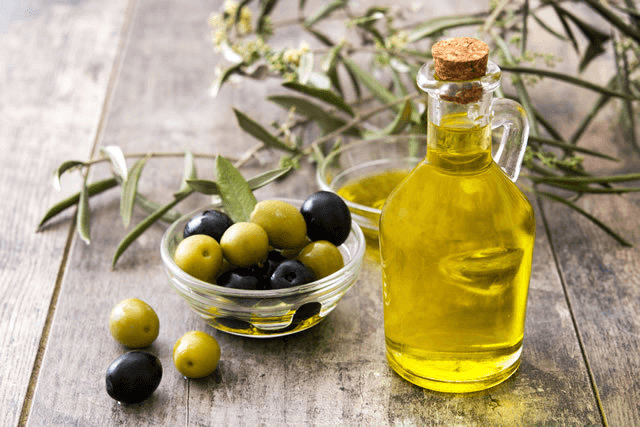
Olive oil is a vegetable oil obtained from the fruit of the olive tree. The “Mediterranean diet,” which uses a lot of olive oil, has attracted a lot of attention for its health benefits.
So, can olive oil be used as a substitute for sesame oil?
Olive oil has a strong flavor and is not a good substitute.
The problem with using olive oil as a substitute for sesame oil is that it has a strong olive flavor.
The olive fruit has a unique aroma and the oil has a rich flavor. For oils with less flavor, such as salad oil, you can add sesame seeds to make it more like sesame oil.
However, it is difficult to add sesame flavor to olive oil, and if you want it to taste like “sesame oil,” you will end up with a different dish because the olive flavor is too strong.
It is possible to use it as an “arranged dish” rather than a substitute.
Olive oil can be used not as a substitute for sesame oil, but as an “arranged dish”. It has a lighter taste than frying with sesame oil.
The atmosphere of the dish will also change to a brighter, Italian-like atmosphere. If you don’t have sesame oil, try choosing olive oil as a change from your usual dishes.
If you don’t need the flavor of sesame seeds![]()

As the name suggests, sesame oil has a rich “sesame” flavor, but there are some people who don’t particularly care if it doesn’t have a sesame flavor.
So what is the best substitute if you don’t need the flavor of sesame?
If you just want to fry, use “salad oil” or “olive oil” as a substitute.
If you use olive oil as a substitute for sesame oil, you can simply use it as a stir-fry oil.
Just like salad oil, olive oil can be substituted for stir-fry dishes.
Mayonnaise can also be substituted.
In addition, mayonnaise is recommended. Mayonnaise has a unique smell that some people may find annoying. However, that unique flavor disappears when it is overheated.
Since mayonnaise itself uses oil, it is suitable for stir-frying, and since it contains vinegar, it is recommended for frying meat and other foods to make them tender. In fact, there are even recipes for stir-fries that use mayonnaise instead of oil.
Characteristics of sesame oil
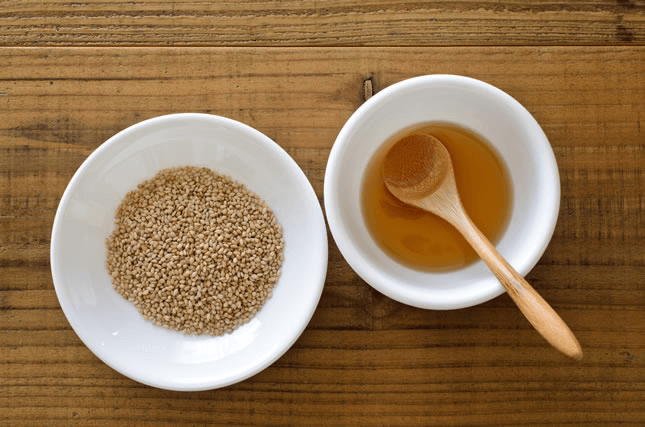
Sesame oil is said to be good for the body when taken raw and as is, as it does not lose its nutrients.
Let’s take a closer look at the characteristics of sesame oil, including its origin, nutrition, and production method.
Characteristics of sesame oil
The first characteristic of sesame oil is the fragrant aroma of sesame seeds. Sesame oil comes in a variety of colors, with some people thinking of yellow and others imagining brown.
In fact, the color of sesame seeds can range from colorless to dark brown. It is said that the color of sesame oil depends on how the sesame seeds are roasted before being pressed.
The higher the temperature and the longer the roasting process, the darker the color of the oil. The longer the sesame oil is roasted, the more fragrant it becomes.
How is sesame oil made?
How is sesame oil made? Sesame oil is generally made by roasting sesame seeds, grinding them under pressure, pressing the oil, then removing the sesame peels and impurities that have settled in the oil, maturing it, and filtering it to finish.
Where Sesame Seeds Come From
It is said that sesame seeds originated in the savannahs of Africa as far back as 5000 B.C. Africans cultivated wild sesame seeds that sprouted in the desert as food. There is also a theory that cultivated sesame seeds originated in India around 3500 BC.
Nutrition and Benefits of Sesame Oil
Sesame oil is a rich source of nutrients such as vitamin E and minerals such as iron and calcium.
In addition, linoleic acid and linolenic acid, a type of unsaturated fatty acid, are effective in lowering cholesterol levels. Lowering cholesterol can help prevent arteriosclerotic diseases, strokes, and myocardial infarctions.
A notable nutrient in sesame oil is sesamin, a type of polyphenol. Sesamin is found only in sesame seeds and is said to help prevent cancer, high blood pressure, and aging by inhibiting the action of harmful active oxygen.
Use sesame oil substitutes to cook better
How about the five ways to substitute sesame oil when you run out, and the dishes you can make with the substitutes?
There are a variety of ingredients that can be used as a substitute for sesame oil, such as chili oil, ground sesame, and peanut butter. You can also use seasonings that are lying dormant in your refrigerator.
By using substitutes, you will be able to arrange your dishes in new ways and create recipes that are different from the usual. This is a great opportunity for you to challenge yourself.